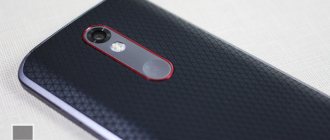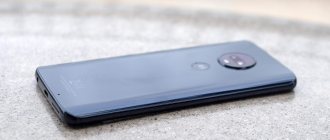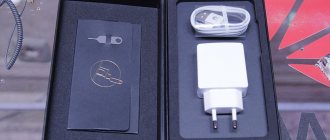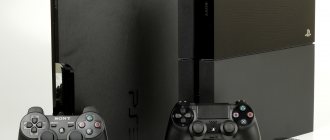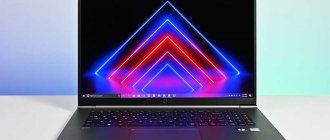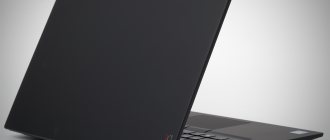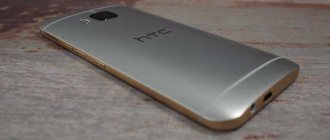09:55 2016-05-27 / Ivan Kushch / Test reviews of equipment
Motorola products are loved for their recognizable corporate identity, high quality and rich functionality. Moreover, this applies not only to flagship smartphones, but also to models of a lower class with an adequate price. We will have to check or refute this statement as part of a user test of Motorola Moto G (3rd Gen) - the most affordable smartphone in the brand’s line in Russia.
We have at our disposal the legendary Motorola Moto G (3rd Gen) smartphone, announced back in 2020, but only reaching Russia this spring. Why legendary? Because it is the brand's best-selling model worldwide. The device sells better than its more advanced counterparts due to its low price. Well, it’s obvious that the gadget is aimed at a youth audience. This is evidenced by the bright interchangeable panels included in the kit.
The new product looks stylish. The smartphone has an original Motorola-style case and a bright and colorful 5-inch screen. The manufacturer claims a functional main camera with a resolution of 13 megapixels and a high-quality front camera for selfies. The device supports all modern wireless services, including LTE cat.4, Wi-Fi.
In addition, the device received fairly powerful hardware, 1 or 2 GB of RAM and 8 or 16 GB of flash memory, depending on the version, as well as a capacious battery. But first things first.
Competitors
The competition is in trouble. Take Wileyfox Swift for example. Same specs, just twice as much memory. And it costs two and a quarter times less.
But okay Wileyfox. The brand is new, little known, suspicious. What if these are third-tier Chinese?
But Huawei, Meizu, LG, Lenovo are serious people.
| Chipset | Memory | Screen | Battery | Cameras | Price | |
| Wileyfox Swift | Snapdragon 410 | 2+16+SD | 5″ 720×1280 | 2500 | 13+4.9 | 7.2 thousand |
| Alcatel Go Play | Snapdragon 410 | 1+8+SD | 5″ 720×1280 | 2500 | 8+5 | 9 thousand |
| Huawei Honor 4C Pro | MTK6735P | 2+16+SD | 5″ 720×1280 | 4000 | 13+5 | 12 thousand |
| LG G4c | Snapdragon 410 | 1+8+SD | 5″ 720×1280 | 2540 | 8+5 | 12 thousand |
| Meizu m2 mini | MTK6735 | 2+16+SD | 5″ 720×1280 | 2500 | 13+5 | 12.5 thousand |
| Samsung Galaxy J3 (2016) | Spreadtrum SC9830 | 1.5+8+SD | 5″ 720×1280 | 2600 | 8+5 | 12 thousand |
| Lenovo P70 | MTK6752 | 2+16+SD | 5″ 720×1280 | 4000 | 13+5 | 16 thousand |
Final words
The 3rd generation Moto G is the most capable member of the popular product family to date. With a fast chipset, excellent camera and battery life, plus full Android and superb build quality, it's generally one of the best budget phones on the market today.
Unlike the rather conservative second-generation version last year, Motorola has really made a global upgrade this time with the latest MotoG . Moto Maker and water-repellent properties have made an already attractive smartphone stand out in the market. It is difficult for him to find a competitor. And does he exist?
As for the starting price, the Moto G (3rd generation) costs just $179.99 for the 1GB RAM + 8GB internal storage version. Adding an additional $40 gets you a device with 2GB of RAM and 16GB of internal storage.
Author: Stepan Mazur
Original photo: Gsmarena
Appearance
| Weight | 155 g |
| Size | 142.1 x 72.4 x 11.6 mm |
| Protection | IPX7 |
Classic. Quite weighty and thick. If you are a fan of slippery dystrophic smartphones, pass by. No one bothered about any super-thin bezels around the screen either - this is the prerogative of top-end smartphones, which Motorola does not classify its Moto G as. That's why the frames are thick.
Ideal shape - rounded at the back, comfortable to hold. The plastic panels are notched. The sides are smooth. The assembly is high quality. The plastic is strong—there are no scratches on the device, although I’m clearly not the first to test it.
The back panel is removable, the battery is not. Under the socket is a slot for a Micro-SD memory card and one Micro-SIM. Dual-SIM Moto Gs supporting our LTE frequencies theoretically exist somewhere in Asia (model XT1550). But they are not available for sale.
The most interesting thing is, of course, protection from moisture (but not from dust). You can heat it for up to half an hour. But only if it’s accidental and not very deep:
Capable of withstanding immersion to a depth of 1 m for up to 30 minutes, provided the back panel is securely closed. Not designed to operate when completely submerged in water. Do not use while swimming or expose to currents of water. Not protected from dust penetration.
Boring details about appearance
Above the screen there is a telephone speaker, sensors, and a front camera. Unfortunately, there is no LED.
Under the screen there is a strip of loud speaker (yes, it’s here in front), which also hides the microphone. There are no Android buttons; they are drawn on the screen if necessary.
On the back there is a camera and flash. Combined with the Motorola logo with a tricky stripe that you just want to click on.
Top. 3.5mm audio output and noise canceling microphone.
Bottom. Micro-USB connector.
On the right is the power-lock button and volume rocker.
The left is empty.
Results
The Russian price of Motorola Moto G8 is 14 thousand rubles. You shouldn’t expect anything serious for this money, but the smartphone performed well: it has a high-quality and practical body, fast firmware, decent performance in games, good sound in headphones and a long operating time.
The low class of the device is revealed by the screen, cameras and vibration. The main disadvantage is the lack of NFC. If this point is not critical, then the new product deserves attention.
Buy
The author thanks Motorola for providing the device for testing. The company had no opportunity to influence its results.
Internals (iron)
| AnTuTu | 24177 (v5.7.1) |
| AnTuTu | 28993 (v6.1.2) |
| Chipset | Qualcomm Snapdragon 410 |
| Cores | 4 x Cortex-A53 1.4 GHz |
| GPU | Adreno 306 |
| RAM (free) | 1 GB (0.4 GB) |
| ROM (free) | 8 GB (3.5 GB) |
| Micro-SD | Up to 32 GB |
The Snapdragon 410 is not the weakest of Qualcomm's 4G-capable chips, but it doesn't differ too much from its little brother Snapdragon 210 in terms of performance.
However, the Moto G turned out to be quite peppy. I don’t know what I need to say thank you for here. Either because the processor is overclocked to 1.4 GHz, or because of the sixth Android, or because the hands of Motorola programmers are growing out of nowhere.
RAM, of course, is not enough, I would like more. Everything is as usual here.
Flash memory is also obscenely small, but you can use a memory card to install applications. Android, however, will definitely encrypt it... That is. You won’t be able to take the card out of your smartphone, stick it into the reader and quickly download photos. Safety, of course, is everything. But, in my opinion, in their sixth Android they overdid something. For example, I cursed for a long time when I realized that my GPS tracks were recorded somewhere where only the navigation program had access. Yes, they are on the memory card. But it is impossible to reach them. Neither using a file manager, nor by dissecting a memory card. No way.
The set of sensors is typical. Compass, accelerometer, proximity, illumination.
Some synthetic tests
Design
is unmistakably Moto G. Motorola this style in the polycarbonate newcomer from the first model. And in the third generation it only developed to a new level. Motorola 's slightly curved edges and dimple signature are back on the new smartphone. And in general we find that the smartphone is a kind of “handsome guy” with a lot of insignia.
Moto Maker is another highlight of the 3rd generation Moto G. It was invented for Moto X in 2013, and on this smartphone it entered the new line. The idea is that the buyer selects and combines the colors of the back cover and rivet for the main camera of his choice immediately before purchasing. True, this cannot be done in all regions of the world.
Screen
| Matrix | S-IPS |
| Diagonal | 5″ |
| Permission | 720×1280 |
| Multi-touch | 10 |
| Max white brightness | 346.2 cd/m2 |
| Min white brightness | 14.8 cd/m2 |
| Contrast | 690:1 |
| Color temp. | 7600K |
| Gloves | No |
A very decent IPS matrix with Gorilla Glass 3. Good brightness, sufficient resolution. There are no newfangled 2.5D fillets.
The coating is quite slippery. Obviously oleophobic. But oleophobicity is not top-level. Either it was like this in life, or it managed to wear out during previous tests.
Operating system and other software
According to the official website, Android should be 5.1.1 Lollipop. Exactly the same information is available on the websites of large stores.
However, the device that arrived was Android 6.0 Marshmallow. Well, it was nice to meet you. I had never met the six before.
At first, when you install the usual set of software, the new permission system really bothers you. But she is reasonable, so what can she do?
A few more screenshots
Battery
The battery is average in capacity - 2470 mAh. The battery test results are also expectedly average - 143% of the standard. Normal good result. It’s difficult to plant to zero in a day; it’s unlikely to last two days in my mode of use.
| Full discharge time | Discharge in an hour | |
| Video | 10:10 | 9.8% |
| Video HD | 6:50 | 14.7% |
| Easy game | 5:20 | 18.8% |
| Hard game | 4:00 | 25.4% |
| Telephone | 21:00 | 4.8% |
| Music | 38:30 | 2.6% |
| GPS on 3G window | 8:10 | 12.2% |
| GPS on Wi-Fi window | 12:00 | 8.4% |
| White screen | 15:20 | 6.5% |
| White screen 100% | 8:50 | 11.3% |
| White screen 0% | 25:20 | 3.9% |
| Internet 3G | 6:20 | 15.7% |
| Internet Wi-Fi | 8:40 | 11.6% |
| Slow 3G torrent | 19:10 | 5.2% |
| Slow torrent Wi-Fi | 42:40 | 2.3% |
Main disadvantages:
– no Wi-Fi AC support;
– no NFC;
– non-removable battery;
– no stereo speakers (the previous generation Moto G had them);
– bad video codecs.
Unlike its predecessor, which was a slight evolutionary upgrade from the first generation, the Moto G has simply taken a leap forward with a 64-bit chipset, 2GB of RAM and the latest Android Lollipop. And the new 13 MP camera is a complete blow to its competitors. Many flagships from the top segment have this. In addition to all this, the phone received a case that can be assembled according to the user’s mood (though the covers must be selected before purchasing), and the case itself received an IPX7 certificate, that is, it can withstand a fall into a sink with water or at least heavy rain. What else do you need for happiness at such a low price?
Motorola Moto G 3rd gen as a photo and video camera
| Rear: | 13 MP (4160×3120) |
| Video: | FHD (1920x1080) |
| Front: | 5 MP (2560×1920) |
I was pleased with the cameras, both of them. What is the main one, what is the front one. Fast. The pictures are good. There are examples in front of you, look.
Night ones, however, are not top-level. But a smartphone is not a top-end one either. In short, I'm pleasantly surprised by the cameras. With such people, it’s probably not a shame to even go on a hike, take pictures of the sights and yourself against their background.
12 more photos
More photos
Example video
Front-camera:
Camera
Moto G8 received three cameras on the back. The standard 16 MP module is equipped with a fast lens with an f/1.7 aperture. It is complemented by an 8-megapixel wide sensor and a 2-megapixel macro camera. The front camera resolution is 8 megapixels.
Photo: Artyom Bagdasarov / Lifehacker
The new product is also equipped with a laser focusing sensor, but the pointing speed leaves much to be desired. You have to wait until the smartphone focuses on the desired object and take a few shots for insurance.
During the day, a standard camera takes good photographs, but in backlight, chromatic aberrations appear in the form of rainbow highlights. The wide-angle one also does not differ in quality, but it pleases with a large coverage angle.
The worst situation is with night and macro photography. In both cases, you have to deal with extremely limited dynamic range and noticeable noise.
The video is recorded in 4K resolution with a frame rate of 30 FPS, there is no electronic stabilization. Also, the smartphone does not support H.265 encoding for efficient compression, which is why such videos take up a lot of memory.
Motorola Moto G 3rd gen as a toy
The toy quality of the Moto G is entirely determined by the hardware used. You can't jump over this limitation. And yes, there are problems with heavy toys. If you can't live without cool mobile games, look for something else.
| A game | Problems? |
| Angry Birds Go! | Crashes when trying to enter the “season” |
| Pitfall! | Everything is fine |
| Shoot The Zombirds | Everything is fine |
| Asphalt 8: Take Off | Better on the average chart |
| Real Racing 3 | Everything is fine |
| NOVA 3 | It slows down a lot when there is movement on the screen. |
| Need for Speed Most Wanted | 30 seconds of game time = 35 seconds of real time. |
| Grand Theft Auto: San Andreas | It slows down even on the minimum graphics. |
| Dead Trigger 2 | Average graphics (can't be displayed anymore) |
| Riptide GP2 | Everything is fine |
| FIFA 15 | Everything is fine |
▌WIRELESS NETWORKS
The smartphone operates in 2G (GSM/GPRS/EDGE, 850/900/1800/1900 MHz) and 3G (850/900/1700/1900/2100 MHz) cellular networks. Available Bluetooth version 4.0 for file and voice transfer. Unfortunately there is no LTE.
The list of wireless communication protocols also includes Wi-Fi, which operates in standard b/g/n protocols. At a distance of ~20 meters and 2 concrete walls, the signal level remains reliable.
The dual-system Moto G module catches satellites well and relatively quickly. The search for satellites is instant, within a minute you can see at least three. Signals from American satellites are picked up faster. GLONASS signals are better received in open space and worse under trees and among tall buildings; Nothing like this was observed for GPS.
OTG works flawlessly out of the box.
